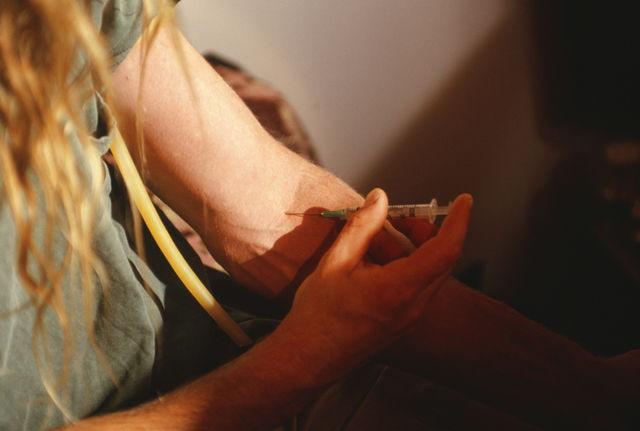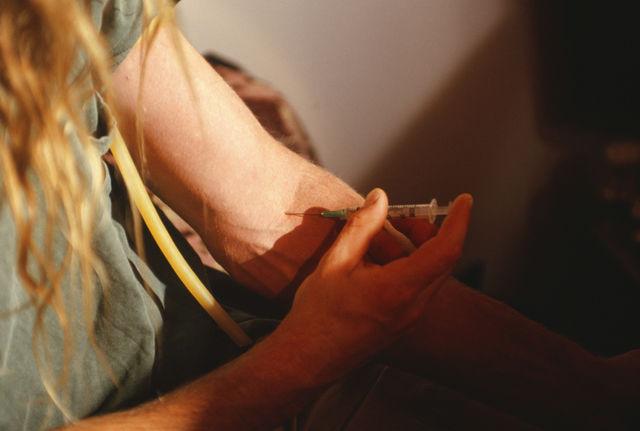Study examines local drug culture

While Narcan has been widely credited with preventing an untold number of deaths from opioid drug overdoses, few users reported routinely carrying the antidote, according to recently released results of a six-month study conducted last year by professionals at Indiana University of Pennsylvania.
And even as heroin commonly began being laced with lethal fentanyl and carfentanyl, few addicts altered their habits, the researchers found.
Erick Lauber and a team of four others at the university conducted the study last year titled “Opioid Overdose Death Rate Investigation” with the purpose of delving into the reasons behind a sharp increase in OD deaths starting in 2015 in Armstrong, Blair, Cambria and Indiana counties, and a subsequent decline in 2018.
Overdose deaths peaked at 53 in Indiana County in 2016 before falling significantly in the last two years. But so far this year, 35 people have died from drug overdoses, with more pending toxicology tests, up from 23 in all of 2018, according to Indiana County Coroner Jerry Overman Jr.
Overman said that although it’s hard to pinpoint what is causing the recent spike, he speculated that Narcan that had been administered was never replaced, “leaving the user at a greater risk of death.”
“It could be the reach for a bigger high by consuming more of the substance. A high percentage of substance deaths are occurring shortly after the person is released from jail, prison or rehab,” Overman said. “It is also possible the person thinks they are getting heroin but they are getting fentanyl and consuming the same amount as they did with heroin.”
Deaths peaked at 41 in Armstrong County in 2016, 52 in Blair County in 2017 and 94 in Cambria County in 2016. All four counties experienced a significant decrease from 2017 to 2018.
Statewide, more than 4,400 people died from an overdose in 2018, a decrease of nearly 18 percent from 2017, according to the Pennsylvania Department of Health.
The study also looked at what prevention and education efforts have been working and what can be developed to continue to fight the opioid epidemic that has gripped the region.
The researchers talked to dozens of current and recovering drug users for their insight into the rural drug culture.
All users interviewed acknowledged they know free naloxone — the overdose-reversing drug commonly called Narcan — is readily available, but few reported carrying the life-saving remedy. Those who did said their intent was to use it on someone else. Those who said they had acquired Narcan reported doing so more recently, after it became apparent that fentanyl and carfentanyl are being routinely mixed with heroin, making it much more potent — and lethal. Yet 27 of the 50 users who were interviewed anonymously said they had overdosed and 21 have had Narcan administered to them, oftentimes more than once.
Officials at The Open Door drug and alcohol treatment center in Indiana said that more than 5,000 Narcan kits have been distributed in recent years.
A Cambria County female in her 20s said: “I’ve been Narcaned over 10 times myself; whether it be in an ambulance, or on someone’s living room floor.” An Indiana Countian in his 30s said he has been given Narcan “15, 20 times, maybe more, I don’t know.” Another Indiana Countian in his 20s reported it has been 18 times for him.
“It’s everywhere. It’s more available than it used to be when I was using heroin. I don’t even remember Narcan being spoke about when I was using heroin,” said a Blair County male in his 30s.
Users said they typically acquired the antidote from either a treatment facility or a local drug and alcohol commission.
Law enforcement, for its part, plays a conflicted role in fighting the drug epidemic: arrest and deterrence versus serving as first responders, the study found. Several said they feel Narcan policies provide legal cover for users that hampers the police’s ability to respond to the drug problem.
The Armstrong-Indiana-Clarion Drug and Alcohol Commission earlier this month recognized borough police officers who have saved 42 lives from drug overdoses from 2016 through this year.
“I realize there’s a lot of stigma. People are angry about it,” one treatment professional said. “They still think that people just did it to themselves.” Another said, “I was out in the community a lot. And there was a huge stigma against Narcan. A lot of the public (thinks) we’re enabling them.” Yet another mentioned seeing reaction to Narcan on social media as “a huge proportion of the community … that are pretty much (saying) ‘let them die.’”
The study was conducted in June through December 2018 by Erick Lauber and Victor Garcia of the Mid-Atlantic Research and Training Institute in Community and Behavioral Health at Indiana University of Pennsylvania and by Melissa Swauger, Christian Vaccaro and Alex Heckert with IUP’s department of sociology.


 Pathways Drug Rehabilitation Luxury Addiction Treatment & Detox Center
Pathways Drug Rehabilitation Luxury Addiction Treatment & Detox Center



